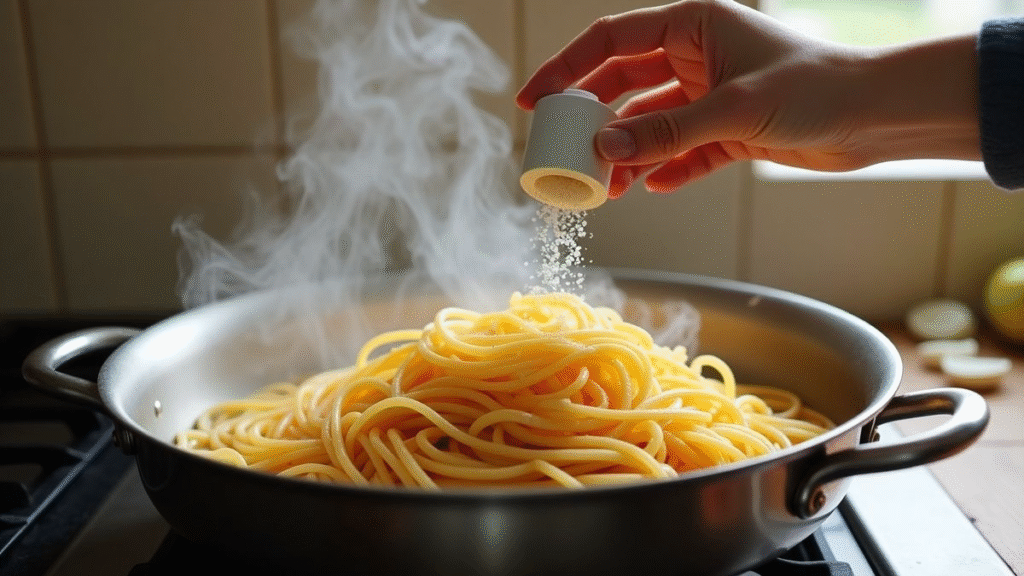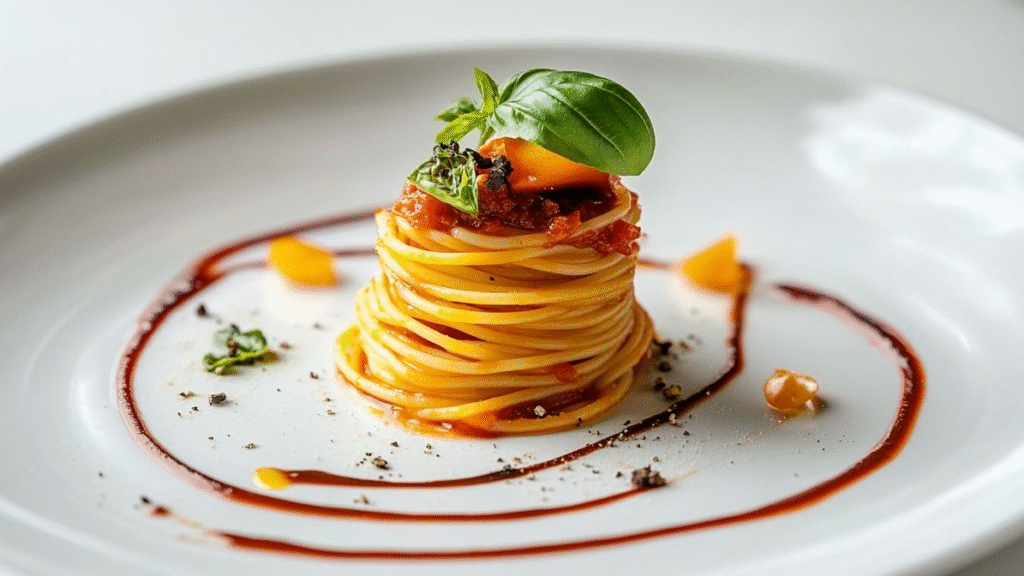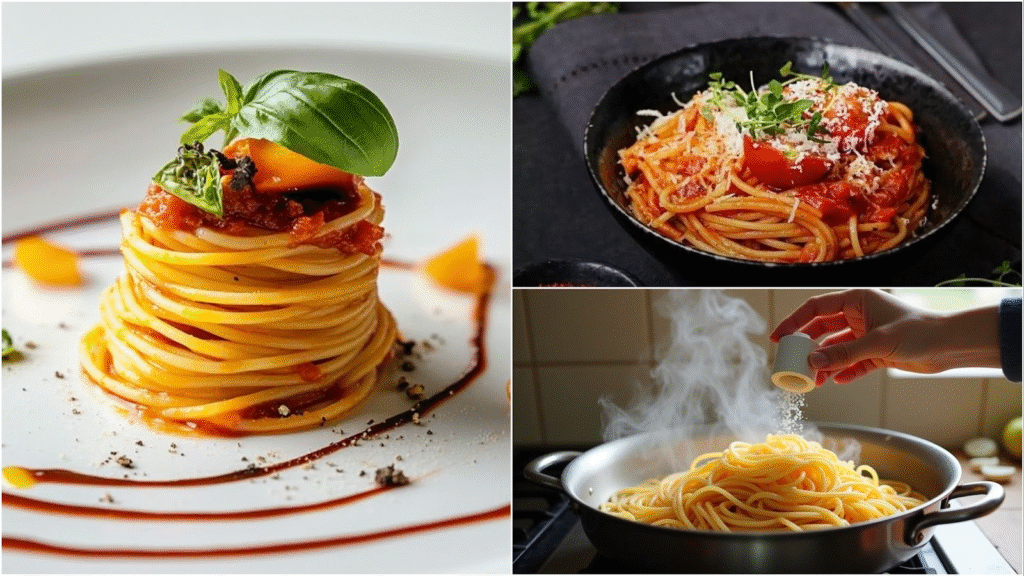For a second, imagine a tiny trattoria somewhere in the streets of Rome. A plate of pasta lands on the table—nothing flashy, just noodles and sauce; and yet it’s so good it practically stops conversation. That kind of magic isn’t locked away in Italy; you can bring it into your own kitchen. Restaurant-style pasta at home is not about complicated tricks; it’s about small, clever moves that make a huge difference.
So, wanna steal a few chef-approved secrets? Keep reading.
The Chef’s Approach to Making Restaurant-Style Pasta at Home
For chefs, pasta isn’t just food; it’s an art form. They fuss over texture, aroma, even the way a noodle snaps between the teeth. If you’re trying to figure out how to make pasta like a chef, the golden rule is: respect your ingredients.

Flour with higher protein yields a sturdy dough, and good olive oil —none of that bargain-bin stuff—adds depth to your sauce. And never forget al dente. Pasta should bite back a little, not slump on the fork. Italians don’t joke about this.
Essential Homemade Pasta Cooking Tips
There’s an old chef’s saying: “Salt your pasta water like the sea.” That’s the secret handshake of pasta-making. Without enough salt, your noodles taste flat, no matter how amazing your sauce is. And don’t throw away that cooking water. One ladle of it can turn a clunky sauce into liquid velvet.
You don’t need a chef’s arsenal to make good pasta. But a few kitchen tools make life easier.
Another chef move? Toss the pasta and sauce together in the pan. Forget dumping plain noodles on a plate and pouring sauce over; it’s the fastest way to kill flavor.
Best Pasta-Making Techniques Every Home Cook Should Try
Cooking pasta isn’t just boiling noodles; it’s a whole craft. Chefs pick pasta shapes the way painters pick brushes. Rigatoni grabs thick sauces, while thin angel hair lets lighter oils shine.
If you’ve got the patience, rolling dough with a pasta machine is a game-changer. It gives every strand the same thickness, which means every bite cooks evenly. These details may feel tiny, but they’re the ones that make you go from “pretty good” to “whoa, this tastes like a restaurant-worthy pasta.”
Building Authentic Italian Pasta at Home Step by Step
Think sun-warmed tomatoes, basil plucked straight from the garden, and garlic sizzling in olive oil. That’s where authentic Italian pasta at home begins—not with a hundred fancy ingredients, but with a few fresh, high-quality ones.

Italians swear by slow cooking. Let that sauce bubble away gently, and the flavor deepens like a good conversation over wine. The heart of Italian cooking? Simplicity. Less fuss, more love, and a whole lot of patience.
Easy Pasta Tricks for Beginners
New to the game? Don’t sweat it, there are easy pasta tricks for beginners that can totally fake a restaurant finish. Like finishing pasta in the saucepan so the noodles actually soak up flavor. Or sprinkling herbs right at the end, so they stay fresh instead of tasting sad and cooked-out.
And here’s a biggie: grate your cheese directly into the pan. It melts and clings, instead of sliding off like it’s dodging your fork.
Choosing the Right Kitchen Tools for Pasta
Let’s be real: you don’t need a chef’s arsenal to make good pasta. But a few kitchen tools make life easier. A pasta machine saves you from rolling dough until your arms give out. A microplane turns parmesan into fluffy snow instead of sad, chunky pieces. Even a ladle just for pasta water makes you feel like you’re in on a secret.
Exploring Pasta Shapes for Every Occasion
Pasta shapes aren’t just fun, they’re functional. Spaghetti is the wingman for oil-based sauces, while shells scoop up creamy ones like little edible spoons.
Food tastes better when it looks good and that’s where pasta plating ideas come in
Comfort food classic? Pick pasta shapes for mac and cheese that hold sauce in every groove, like cavatappi. So next time you’re shopping, mix it up. Grab a new shape and see how it changes the whole vibe of your dish.
Pasta Plating Ideas to Impress at the Table
Food tastes better when it looks good and that’s where pasta plating ideas come in. Try twirling long noodles into little nests; it looks fancy but takes two seconds.

Drizzle a bit of olive oil for that glossy “restaurant shine,” and top with a few fresh herbs or parmesan shavings. Wide plates are your friend—they give sauce room to stretch out instead of pooling awkwardly.
Bringing It All Together
Here’s the thing: making restaurant-style pasta at home isn’t about following every rule. It’s about knowing the little tricks—salting your water, picking the right pasta shape, or tossing noodles with sauce in the pan—and letting them work their quiet magic.
So next time you stir up a pot, try just one of these tricks. You’ll taste the upgrade instantly. And hey, don’t keep it to yourself. Share it with a friend, a partner, or the whole family. Because food, especially pasta, was never meant to be eaten alone.
